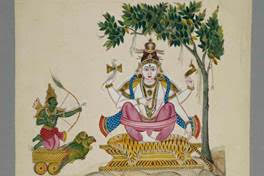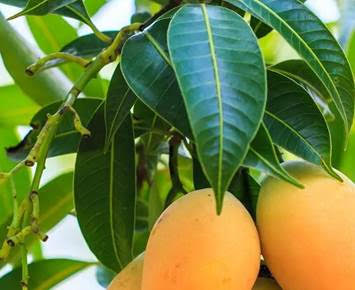by Selvi Viswanathan and Terry Foxx
Terry Foxx: My February blog was on the Mythology of Trees. Selvi Viswanathan contacted me and said, “In India they worship trees.” This intrigued me because I had made the statement “worship of trees was worldwide.” I was only familiar with the Celtic tribes because I had traveled to Ireland. I asked Selvi how they worshiped trees. She sent me back this interesting blog intertwined with her childhood experiences. But before that, I want to discuss mythology.
What is Mythology?
Mythology is a collection of traditional tales called myths from various cultures all over the world. Many date back to ancient times and deal with gods and heroes of a particular culture. They are stories that deal with the human condition.
Why is mythology so important? Myths are more than just stories. They serve a profound purpose in ancient and modern cultures. They explain the world to the ancient folk and answer timeless questions for modern and ancient humans. They are as relevant to us today as they were to the ancients and help explain cultural differences between people.
HINDUISM AND MYTHOLOGY
There are three major religions in India, of which mythology is important. Eighty percent of the population is Hindu. Other forms of religion include Buddhism, Sikhism, Jainism, and others. Throughout India, shrines, temples, mosques, and churches are found right next to each other. The myths and stories of the gods and goddesses are deep in the Hindu culture. It is common to find images of gods and goddesses in public and private spaces. Festivals and images of natural landscapes are important, as are trees and rivers.
In the Hindu culture, the Trinity of the gods includes Brahma the creator, Vishnu the protector, and Shiva the destroyer. They are all male with consorts. Brahma’s consort is Saraswati, goddess of education, music, and art. Once created, they must do beneficial things. Vishnu is the protector, and his consort is Lakshmi, the goddess of wealth. Shiva is the destroyer. His consort is Parvati who represents energy and the force to do things in life.
Beyond the three gods, there is Cupid (Kama), also a male. He is considered the god of love. His beautiful wife is Rathi. A favorite story is when Kama tries to play mischief with his arrow on Shiva during meditation. Shiva is upset and curses him. Kama’s consort Rathi prays to Parvati to forgive him. Many such stories are found in the Hindu culture. Forgiveness and other aspects are important to humanity, thus the story.
Selvi Viswanathan’s observations: On 20 February 2023, I came across Terry Foxx’s article on the Mythology of Trees. It intrigued me. How did we worship trees in my native India? My answer led me down the memory lane of my childhood.
Hindus have always had great reverence for trees and other plants. They are the foundation of life and growth. In fact, every tree has a tree deity or a god/goddess who is worshiped, respected, and given offerings.
In my childhood in India, all parts of the plant are worshipped. They offer roots, stems, leaves, flowers, and fruits to God since time immemorial. It is a symbol of gratitude. They believe that life cannot exist without trees.
Although many trees are worshipped, I would like to discuss only one tree, the Mango tree, as an example. This tree has a fruit often seen on fruit stands in the US.
Mango Tree


The Mango Tree: The mango tree is native to India. It grows from seeds and can grow up to 100 ft or more with a canopy of 35 ft or more. The leaves are approximately 12 inches long. It is considered an evergreen tree. The mango tree provides many travelers and villagers shade. It is also the home of many animals and birds.
The Mango is a national fruit. It consists of an outer skin, a fleshy edible portion, and a large seed.
Mythology: The mango tree mythology is an inseparable part of Indian Culture and customs. The Hindus believe the mango tree is the home of the gods. So, they decorate their home with mango leaves during their favorite festivals.
Love arrives with the blossoming of the mango tree. Kama (Cupid), the god of love, tips his arrow with five flowers, one of them a mango.
Childhood Memories: We had a mango tree in our yard, probably from a seed we discarded after eating the fleshy mango. It was in an area of our yard enclosed by walls. We did not notice it until it got about 10 ft tall. When the tree was big enough, I could cut the branches to decorate our front door for festivals.
There was a wall between our neighbor’s house and our house. I could reach the mango tree to cut the branches if I climbed the wall (8ft high). My neighbor used to warn me, “You are a girl, you’re not supposed to climb the wall.” I am glad my parents allowed me to have the freedom to climb!
My favorite story about the mango was used as a reward by Shiva. At Kailash, the abode of Shiva and Parvathi, they were spending time with Ganesh and Subramanya, their children. Shiva decided to have a competition between the two children. “Whoever goes around the world first and comes back will get the fruit of the mango. “Subramanya, with his peacock, started and went around the world. However, Ganesh just went around his parents and was rewarded with the mango. Subramanya got upset and left in anger.
The story conveys that parents are the world for the child. I loved it and asked our good friend, Sri Rajam, a well-known artist for authentic painting, to do a painting for Hari’s bedroom when he was a child. I now have it in my computer room.
**************
Culture is often defined by myths told, over and over. If you have any information about myths of any specific culture, please let Terry know.

I love trees too, and it is wonderful to read about their universal respect throughout the world. I have read many indian tales where the tree plays an important role, and i love the mango story shared. Thank you for sharing this…it took me down memory lane:)
Thank you Mathy
This is a really interesting and informative analysis by Mrs. Selvi Viswanathan . It is bound to transport many Indians into a world of nostalgia. It brings into focus certain aspects of Indian mythology that I myself was not aware of.
The Indian summer is extremely harsh, yet its discomfort is mitigated ( & maybe even overlooked !) to some extent by the easy availability of the mango fruit. Mango is a hardy tree that grows easily , not requiring much regular care.
Its sturdy leaves are useful for festoons during auspicious occasions . It leaves a lingering taste both in its raw form ( as pickle ) and when it is ripened fully .
No wonder Indians revere it as the King of Fruits, worthy enough for worshipping in one’s backyard !!
Thank you , Mrs Selvi, for elaborating on the simple Gifts of Nature . We need to accord them as much reverence as we do for some of our gizmos and gadgets in our day to day lives !
The Mango tree indeed is the king of trees.
Besides many other trees, the neem-tree is the most important tree. In our garden we had several trees, but neem-tree is most valued, as it is a cure all for many diseases of past and present.
I am including a short note on neem-tree. Its medicinal value is nonparallel.
“Azadirachta indica, commonly known as neem, nimtree or Indian lilac, is a tree in the mahogany family Meliaceae. It is one of two species in the genus Azadirachta. It is native to the northeast of the Indian subcontinent and to Indochina, but is naturalized and grown around the world in tropical and subtropical areas. Its fruits and seeds are the source of neem oil. Neem (नीम/نیم) is a Hindustani noun derived from Sanskrit nimba (निंब).”
My dear friend Selvi, it is nice of you to introduced Indian Trees. Almost all Indian trees are worshiped and various religious festivals are celebrated with them.
Your mango tree has opened up my memory-box with our childhood and our beautiful town Berhampur.
Most of all congratulations to Terry-Fox for opening up the topic of Mythology of Trees. There is a fathomless information about them around the globe. Well done to both of you. Keep going friends.
Best wishes.
This article reminds us of the quote by W.H. Auden: “ . . . trees reveal a lot about a country’s soul – a culture no better than its woods.”
Our ancients in India understood how trees play a role in maintaining ecological balance and providing oxygen to human beings. Accordingly, since 1950, India has been celebrating Van Mahotsav (Forest Festival) in July 1 through July 7.
A very thoughtful description of the mango tree.
Every idea conveyed is a fantastic journey to the cultural and mythological roots of India.
I love the awesome pictures.
Appreciate Selvi Viswanathan for this lovely article on the Mango tree.
Selvi, I just read this wonderful account of the mango tree and I really enjoyed your childhood memories of picking the branches to decorate your front door. Thank goodness you climbed the 8 ft. wall Yes, girls can climb too! I wish I could have seen you then. I so clearly remember the intricate decorations outside your front door that you made (and probably still make) with rice flour. I realized the Hindu culture has a great variety of festivals, honoring the different gods. And how wonderful that the mango tree is a home for the gods. Thank you for writing this!
Mango tree is one of the most revered trees in Hinduism.It is a sthala virutcham,(temple tree) in many temples,one among them being Kanchi Ekambareswar temple.Here the tree is believed to be more than ,3500 years old whose branches are said to yield four different types of mangoes from four branches representing four vedas .
The religious history of Mangadu,a temple town, says that the region derived its name from the mango grove of that area, where godess Kamatchi observed penance .
Thus the mango tree is close to the heart of people in India and its fruit is dear to the people all over the world.